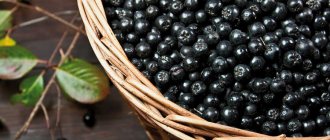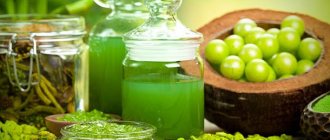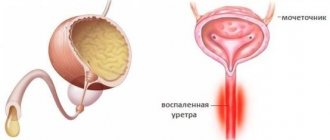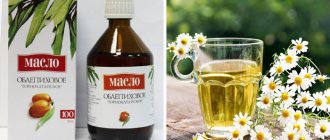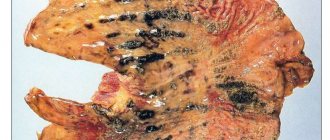- September 7, 2018
- Diseases and conditions
- Natalya Matveychuk
Lupus erythematosus is a disease that can be treated with folk remedies in combination with medications. This disease affects the entire human immune system, and then connective tissues. If the disease is not detected in time, it can lead to damage to the entire body, namely: joints, heart, liver, kidneys, lungs, etc. Many doctors recommend that patients treat systemic lupus erythematosus not only with medications, but also with folk remedies.
Symptoms of lupus erythematosus
It is worth noting that the obvious signs of the disease are expressed differently in each patient. Symptoms of systemic lupus erythematosus:
- A characteristic rash on the face.
- Weight loss.
- Fast fatiguability.
- Increased body temperature.
- Inflammatory processes in the heart and lungs.
- Pain in muscles and joints.
- Nervous system disorders.
- Inflammation of the oral cavity and sinuses.
- High sensitivity to cold.
- Kidney disorders.
- Damage to the gastrointestinal tract.
The consequences of lupus erythematosus are irreversible in most cases, so you should not put off visiting your doctor for too long.
Lupus treatment
Systemic lupus erythematosus is a chronic disease that is caused by autoimmune processes occurring in the body. Most often it affects women whose age ranges from 15 to 45 years. Dry statistics indicate that systemic lupus is not a very common disease. So, out of 100 thousand people, only 50 people will develop this pathology.
Although lupus is classified as a chronic disease, it needs to be treated. Therapy allows you to alleviate a person’s condition during an exacerbation of the disease, as well as prolong the period of remission as much as possible.
Causes of the disease
To date, doctors still cannot name the exact cause of this serious illness, since lupus erythematosus is an autoimmune disease, it affects cells that subsequently become antigens.
The antigen then begins to produce antibodies to the cells. And it turns out that the immune system resists the body, thereby destroying its own cells. As a result, severe and irreversible consequences occur in the internal organs.
Some scientists put forward an interesting hypothesis: the cause of lupus erythematosus is a viral infection, and it arises due to a genetic defect in the immune system.
Treatment of lupus erythematosus with folk remedies
In this case, you need to understand that people who suffer from this disease should not use drugs that stimulate the body’s defenses. They can contribute to even greater and more aggressive development of lupus.
In this regard, patients are not recommended to carry out therapy on their own; they should choose a treatment plan only together with their doctor. This includes not only official medicine, but also methods of treatment using herbal preparations.
Treatment of lupus erythematosus with folk remedies is more than effective, and not only adherents of alternative medicine, but also a large number of doctors are convinced of this. Therefore, this method of therapy should not be neglected.
What herbs help with lupus erythematosus?
Experienced healers included all useful herbs for the treatment of lupus erythematosus in various medicinal preparations. By using them, you can “pacify” the acute course of the disease.
Medicinal collection No. 1. To prepare an infusion from a mixture of herbs, you need to take the following ingredients:
- calamus roots - 100 grams;
- elecampane roots - 100 grams;
- dandelion roots - 100 grams;
- tansy - 75 grams;
- Kirkazon - 75 grams.
How to cook?
- Measure out 3 tablespoons from dry ingredients.
- Pour boiling water (750 ml) over the collection.
- The infusion must be left to infuse in a thermos overnight.
- The next day, filter the product.
Drink the resulting infusion once an hour before the main meal. The resulting volume is designed for 4 applications. Some healers advise adding 30 drops of Japanese Sophora to the medicine.
Medicinal collection No. 2. This decoction is prepared from the following ingredients:
- peony root;
- burnet root;
- Tatar herbs;
- burdock root;
- celandine herbs;
- calendula flowers.
All ingredients must be taken in equal parts.
Measure 4 tablespoons from the prepared plant material and add 1 liter of filtered water. Place the pan on the fire and simmer the ingredients over low heat for about half an hour. Then filter the product and consume throughout the day before eating the main meal.
Medicinal collection No. 3. To prepare this remedy you will need to take in equal proportions:
- lingonberry leaves;
- water pepper herbs;
- St. John's wort and birch leaves;
- coltsfoot roots;
- plantain leaves;
- dandelion roots;
- tansy;
- oregano herbs;
- nettle;
- herbs sweet clover and yarrow.
Preparation:
- Dry and grind all herbs and plant roots to a homogeneous consistency.
- Measure out 2 large spoons of plant material and pour into a thermos.
- Brew the ingredients with hot water (0.5 liters).
- The medicinal mixture must be infused in a thermos for approximately 8 hours.
- Then filter.
The resulting medicine should be drunk 1/3 glass three times a day.
Medicinal collection No. 4. To brew, you need to combine the following in equal proportions:
- hop cones;
- fenugreek seeds;
- Leuzea root;
- liquorice root;
- celandine grass.
Preparation:
- Take 1 tablespoon of plant material and brew a glass of hot water.
- Then filter the healing agent.
- Leave to infuse in a dark place for half an hour.
It is recommended to take this infusion twice a day before meals.
Treatment of illness with decoction
Treatment of lupus erythematosus with mistletoe decoction is quite effective. Mistletoe leaves are collected in winter, thoroughly washed and dried. Then the raw materials are crushed and poured into a glass container and stored in a dark place.
To prepare a healthy decoction, you need to pour 2 teaspoons of the mixture into 250 ml of hot water. Boil for no more than 1 minute and leave for about 30 minutes. After which the product is filtered and drunk 3 times a day. The duration of therapy for the disease is 30 days.
Thus, treatment of lupus erythematosus with folk remedies, including this decoction, can help with moderate development of the disease.
Alcohol tinctures
Vodka recipes are no less useful for the treatment of systemic lupus. Bee death is one of the most effective methods of therapy and consists of dead bees. To collect dead bees, it is best to contact an experienced beekeeper.
Important: this product is not recommended for use by people who are prone to allergic reactions to bee products.
Preparation:
- When the bee specialist has collected the dead fruit, it needs to be kept in the sun for a while and then crushed.
- Pour 250 ml of alcohol into a tablespoon of the mixture.
- After that, the container with the medicine must be tightly closed with a lid.
- Send the mixture to infuse for 3 weeks in a dark place.
Before use, the product must be diluted with water (1:1 ratio) and applied to the affected areas of the body. The procedure is recommended to be carried out twice a day. In addition, the finished tincture can be drunk. Dilute 1 teaspoon of medicinal raw material in 250 ml of water and consume three times a day.
There is another effective alcohol tincture, which is prepared based on hemlock. To prepare it, you need to measure out 50 grams of plant material and pour in 0.5 liters of vodka. Instructions for use:
- Day 1 - add 1 drop of tincture to water and drink it in the morning before breakfast;
- Day 2 - drop 2 drops;
- Day 3 - 3 drops;
- Day 4 - 4 drops, etc.
and so on every day until you consume 40 drops.
It is not recommended to abruptly stop the course of treatment. It is necessary to reduce the number of drops of tincture in descending order. After drinking the tincture, it is not recommended to eat for one hour.
Systemic lupus erythematosus - symptoms and treatment
The goals in the treatment of SLE are to reduce the severity of the disease, prevent exacerbation and induce remission of the disease. It is important for the patient to maintain his physical, mental, social and emotional functions at the same level [8]. During treatment, they strive to achieve clinical and laboratory remission, in which the patient feels well, blood and urine tests are normal, and to prevent damage primarily to the kidneys and central nervous system, as well as other body systems.
It is impossible to influence the cause of SLE, so therapy is used that prevents the development of the disease, that is, it prevents the formation of immune complexes.
Groups of drugs used in the treatment of SLE:
Glucocorticoids (GCs) are first-line drugs for SLE. Glucocorticoids are normally produced in the adrenal glands and prevent inflammatory processes. For treatment, synthetic forms are used in the form of tablets, skin cream or injections [8]. The most effective short-acting drugs are those that minimally affect mineral metabolism:
- prednisolone;
- methylprednisolone (Urbazon, Medrol, Solu-Medrol).
They are used mainly in tablets and only in extreme cases intramuscularly, increasing the dose by 3-4 times compared to tablets. The dosage depends on the activity of the disease:
- low activity < 10-20 mg/day;
- moderate - 20-40 mg/day for 2-4 weeks with a gradual reduction to maintenance doses;
- high activity > 1 mg/kg/day (but not more than 60 mg/day), duration depends on the clinical effect.
If you stop taking GC, the disease may worsen and higher doses of hormones along with cytostatics will be required, which can cause irreversible changes in many organs. Therefore, even when the patient is in remission, doctors prescribe constant use of low doses of GC (1-1.5 tablets of prednisolone or methylprednisolone). It is impossible to abruptly stop taking GC or reduce the dose.
Side effects of GC:
- uneven development of adipose tissue (a rounded face resembling the shape of the moon, deposition of fat in the abdomen and back in the form of a “hump”);
- increased appetite and obesity;
- emotional imbalance;
- stretch marks (purple stretch marks on the skin);
- increased hair growth;
- increased blood pressure;
- high cholesterol and glucose levels;
- early development of atherosclerosis and cataracts;
- development of osteoporosis, leading to bone fractures.
To reduce the risk of side effects during GC therapy, it is necessary to take calcium and vitamin D supplements, monitor sugar, cholesterol and blood pressure levels. You should normalize your weight and give up tobacco. Physical exercise will help reduce the negative effects of GCs on the cardiovascular system [8][13][14].
Also, when taking GC, the volume of the adrenal glands decreases, because the drugs reduce the production of their own hormones. That is why abrupt discontinuation of GC is unacceptable - this can lead to the development of acute vascular crises. To get the adrenal glands used to producing their hormones, the dose of GC is reduced very slowly over weeks and sometimes months [7][8].
Cytostatics. Patients with SLE with a high degree of activity (involvement of the kidneys or central nervous system, damage to many organs and systems) are prescribed cytostatics (immunosuppressants). These include:
- cyclophosphamide;
- azathioprine;
- mycophenolate mofetil;
- methotrexate.
Cytostatics suppress the activity of the immune system by regulating the production of immune cells. These medications must be taken for a long time (up to several years) under the control of blood tests, urine tests, liver tests and under close medical supervision due to the risk of side effects (nausea, vomiting, hair loss, cystitis, increased risk of cancer and infections) [7] [eleven].
NSAIDs (non-steroidal anti-inflammatory drugs) are prescribed for fever and to relieve joint and muscle pain. NSAIDs include:
- "Nise";
- "Nimesil";
- "Arcoxia" and others.
Antimalarial drugs. Used for mild forms of SLE. Initially used to treat malaria. Such drugs include hydroxychloroquine - an auxiliary, and sometimes the main method for the benign course of SLE. Use 200 mg per day, the dose can be increased to 400 mg per day. Improvement appears after 4-6 months.
SLE patients need to reduce lipid and sugar levels and reduce the risk of blood clots.
Once a year, a complete ophthalmological examination , as retinopathy (photophobia and color vision disturbances) may develop.
Extracorporeal methods of treatment.
Plasmapheresis is used in severe cases with rapidly progressing renal failure and damage to the central nervous system and lungs. This is a procedure for taking blood, clearing it of immune complexes and returning it or some part back into the bloodstream.
Genetically engineered biological drugs (GEBPs) - rituximab and belimumab.
Excessive production of autoantibodies is a major factor in the inflammatory process and organ damage in SLE. Autoantibodies are produced by special cells - B-lymphocytes (B-cells), so if their activity is suppressed, it is possible to solve one of the important problems of SLE therapy.
The main anti-B cell drugs are rituximab (Abthera) and belimumab (Benlysta), which reduce the number of B lymphocytes and reduce their activity, thereby promoting remission of the disease. In addition, it is possible to reduce the dose of GC and cytostatics.
Rituximab is prescribed for severe disease - for kidney damage that is resistant to other therapy. Rituximab reduces the activity of the disease, the drug affects skin syndrome, central nervous system damage, and arthritis. It is prescribed as a dropper and administered slowly over 60 minutes.
Belimumab (Benlysta) is the first DMARD specifically designed for the treatment of SLE in patients refractory to standard treatments. A contraindication to the use of belimumab is severe damage to the kidneys and central nervous system. The drug is administered intravenously in a hospital using a dropper over one hour.
Rituximab and belimumab rarely cause side effects. These are mainly allergic reactions in the form of a rash on the skin, sore throat, difficulty breathing, swelling of the face and lips. In this case, the medications are discontinued and antihistamines and GCs are administered [11][12].
All patients with SLE are subject to dispensary observation. This is necessary in order to:
- recognize a beginning exacerbation in time;
- identify side effects and complications of drug therapy.
It is important to explain the need to follow the recommendations and the inadmissibility of stopping treatment on your own, as this is dangerous for the patient.
A patient with SLE must:
- Visit a rheumatologist at least twice every three months.
- Get tested every three months:
- general blood analysis;
- Analysis of urine;
- blood chemistry.
- Annually:
- take a lipid profile test to prevent atherosclerosis;
- undergo densitometry (diagnosis of bone density and likelihood of fractures) to prevent osteoporosis;
- do Rg-graphy of the pelvic bones to avoid aseptic necrosis of the femoral head;
- have an ophthalmological examination to prevent the risk of retinopathy when taking hydroxychloroquine;
- determine titers of antibodies to phospholipids (in the presence of secondary antiphospholipid syndrome);
- visit a gynecologist.
Decoction of bee honey and oat grains
Legends were made about the benefits of honey back in the days of Ancient Rus'. This is the best assistant for colds, low levels of immunity, diseases of the joints, heart, etc. However, it is no less useful in the treatment of systemic lupus erythematosus, and in combination with oat grains its benefits only increase.
To prepare a honey-oatmeal decoction, you need to boil 1 liter of water and pour 250 grams of oat grains into it. Then reduce the heat and wait until the mixture has evaporated by about a quarter. The resulting product should be filtered and consumed before each meal. Don't forget about honey, which must be added to taste.
Establishing a differential diagnosis
The main problem in diagnosing systemic lupus erythematosus is that the disease has many common symptoms and signs with other diseases of a rheumatic nature, including:
Rheumatic connective tissue lesions (dermatomyositis, scleroderma).
Autoimmune kidney inflammation caused by other diseases.
Cytopenias caused by autoimmune reactions of the body.
Effective ointments
For severe skin lesions from the disease, many doctors prescribe ointments. They most often prefer ointments made from birch buds. To prepare it, you need to mix pre-crushed birch buds (250 grams) and fresh fat (0.5 liters).
The healing mixture should be kept at low temperature in the oven for 3 hours a day for 7 days. The finished medicine is applied to the affected areas of the body. This drug can also be taken orally, after diluting it with 100 ml of heated milk.
You can prepare an ointment based on tarragon. To do this, you need to dissolve fresh interior fat in a water bath. Then the dry parts of tarragon are added to it in a ratio of 5:1. Next, the healing agent is kept in an electric oven for 5 hours at low temperature. The useful drug is filtered, allowed to cool and stored in a cool place. You need to use this ointment for several months, lubricating the affected areas of the body three times a day.
Traditional medicine against lupus erythematosus
Treatment of cutaneous and systemic lupus erythematosus according to traditional medicine is supportive in nature and can be used during a mild course of the disease or in remission. In this case, you cannot use drugs that stimulate the immune system - this can aggravate the course of the disease.
Popular effective recipes:
- A decoction of dried mistletoe leaves collected from birch trees in the cold season. 2 tsp. leaves are poured with a glass of boiling water, simmered in a water bath for 1-2 minutes and left for half an hour. The resulting infusion is drunk in three doses during the day. Take 1 month.
- Licorice decoction. Pour boiling water (500 ml) over dried licorice roots (1 tablespoon), simmer over heat for 15 minutes, cool at room temperature. Drink the strained broth during the day between meals. Do this for a month.
- Ointment from birch buds or tarragon for the treatment of lupus erythema. A glass of ground birch buds (tarragon) is mixed with a half-liter jar of pork fat. This mixture is simmered in the oven with the door open for 5-7 days for several hours. The resulting ointment is applied to the erythema and taken orally before meals, 1 tsp.
There are many other alternative medicine recipes that are used to treat lupus erythematosus. However, in severe cases of the disease and at the stage of its exacerbation, traditional medicine should give way to traditional drug treatment.
Treatment of lupus erythematosus in children
If a child suffers from this disease, then a decoction of young willow roots can help him.
How to cook?
- Collect all the roots and rinse thoroughly.
- Dry them in the sun or in an electric oven and then grind them.
- Measure 1 tablespoon of dry raw materials and pour 250 ml of boiling water.
- Boil the broth for 60 seconds, let it cool.
- The product is infused in the cellar for 8 hours, after which it must be filtered.
It is recommended to consume the healing drink 2 tablespoons at regular intervals. If desired, bee honey can be added to the decoction. The average duration of treatment is 29 days.
Treatment of SLE in children
The approach to treating lupus erythematosus in children should be different. Young patients suffer more severely from the disease, and many tablets become toxic to them.
A special herbal decoction with willow can be a good addition to the main treatment for children.
For it you will need the roots of this tree (you must definitely find a young plant whose roots are not yet very developed). If fresh roots are used, they must first be dried in an oven.
A tablespoon of dry crushed willow roots is poured into a glass of boiling water and boiled a little (for 1-1.5 minutes). Then the broth is filtered and infused for half a day. The decoction must be taken frequently, 2 tablespoons every two hours. If the child is very small, you can add honey, preferably fresh, to improve the taste. The decoction can be consumed for a month.
Disease prevention
Preventive measures for the secondary course of the disease should be aimed at rational comprehensive treatment. The patient is obliged to visit specialized centers for examination on time, take medications according to the regimen prescribed by the doctor, and also not sunbathe and make sure that the body does not become hypothermic.
In addition, a person is recommended to refuse any surgical operations and vaccinations. When the disease worsens, the patient needs to undergo antibacterial therapy. In order for the treatment of lupus erythematosus with folk remedies to bear fruit, it is necessary to follow all the recommendations of the attending physician.
